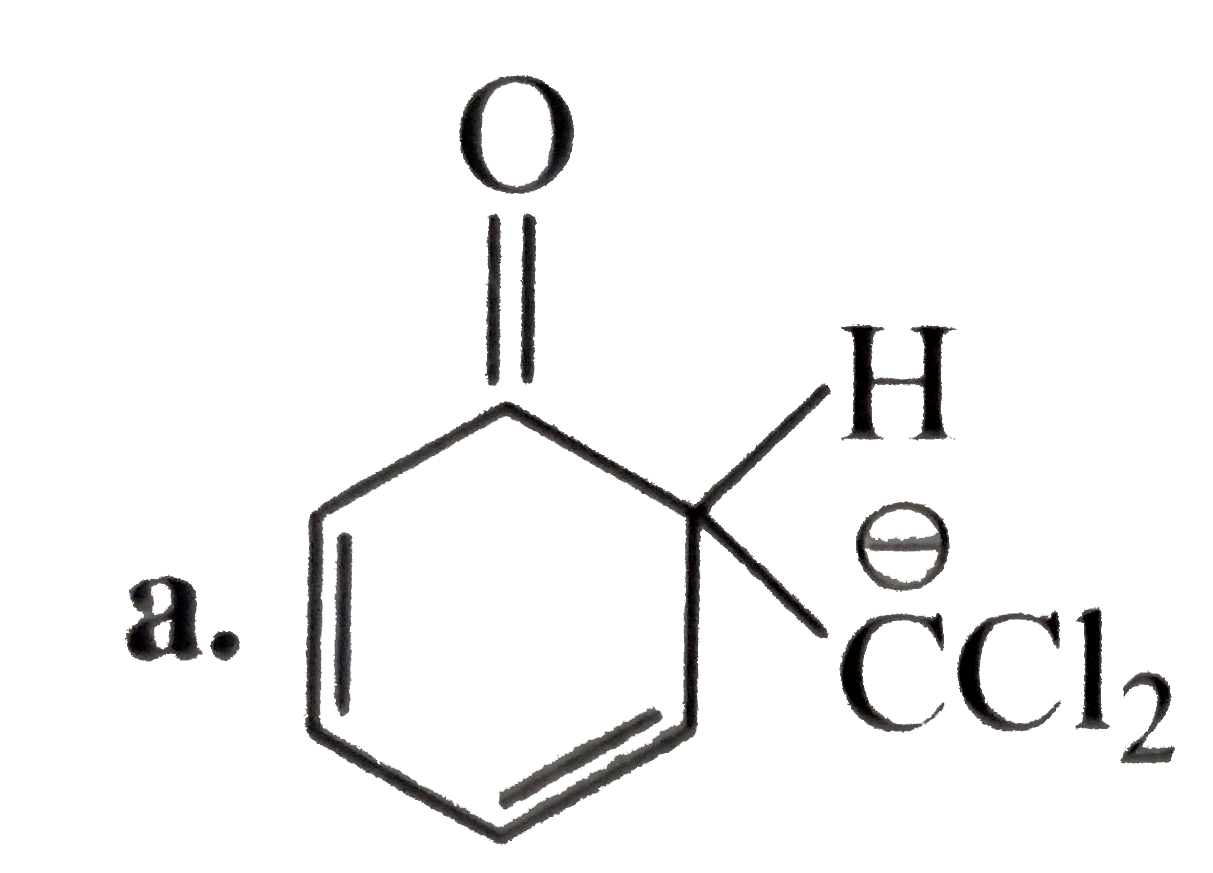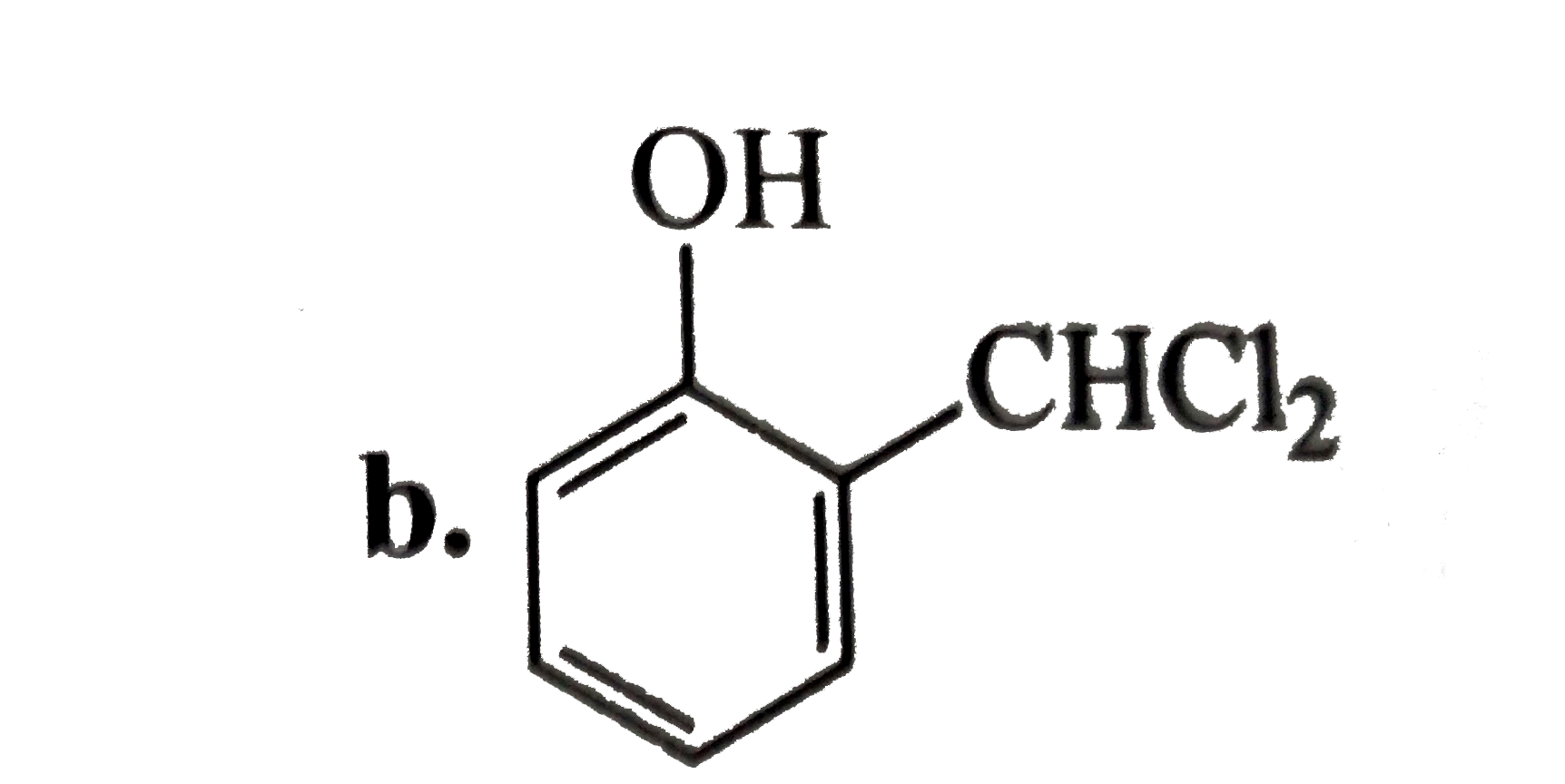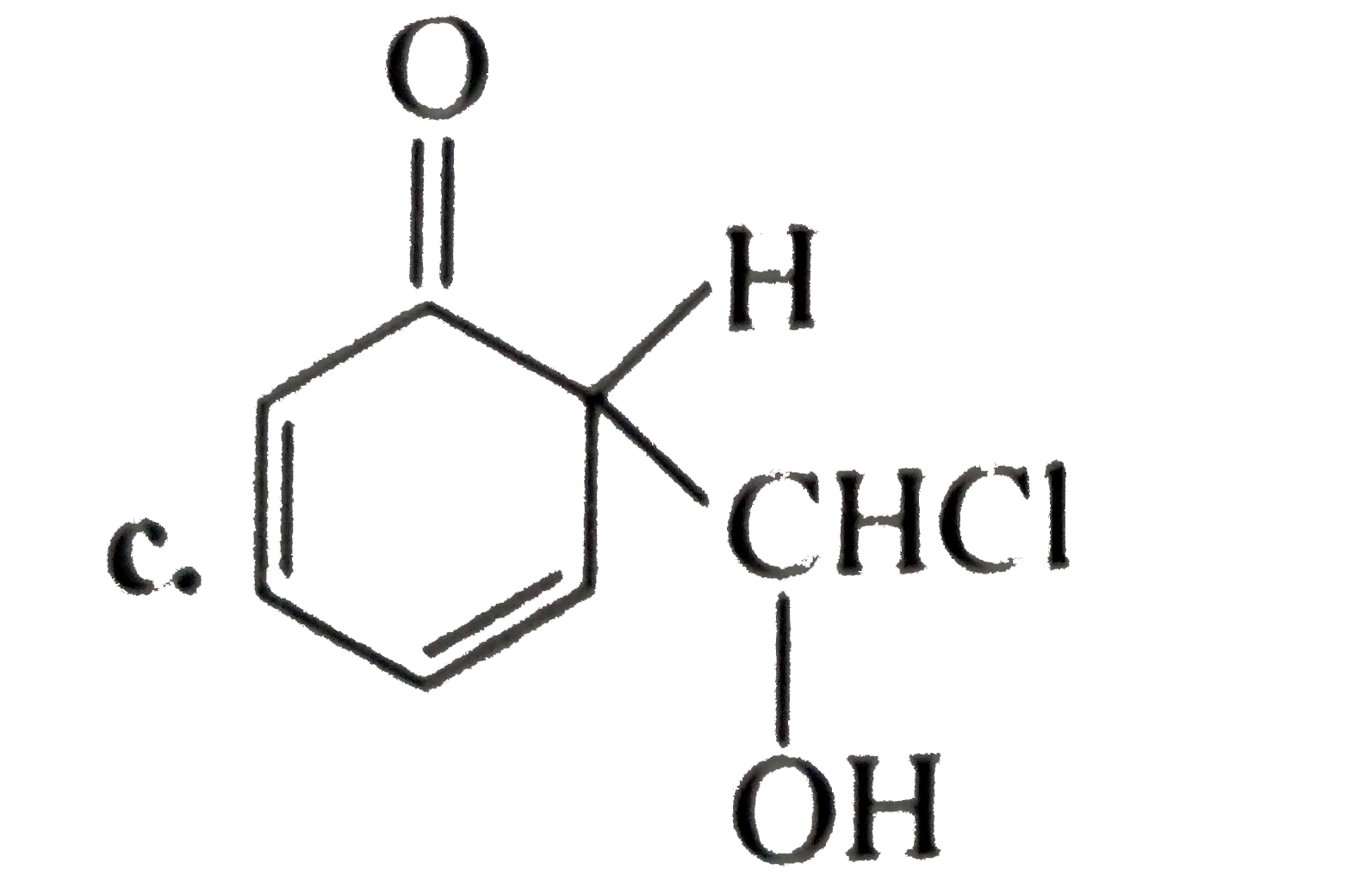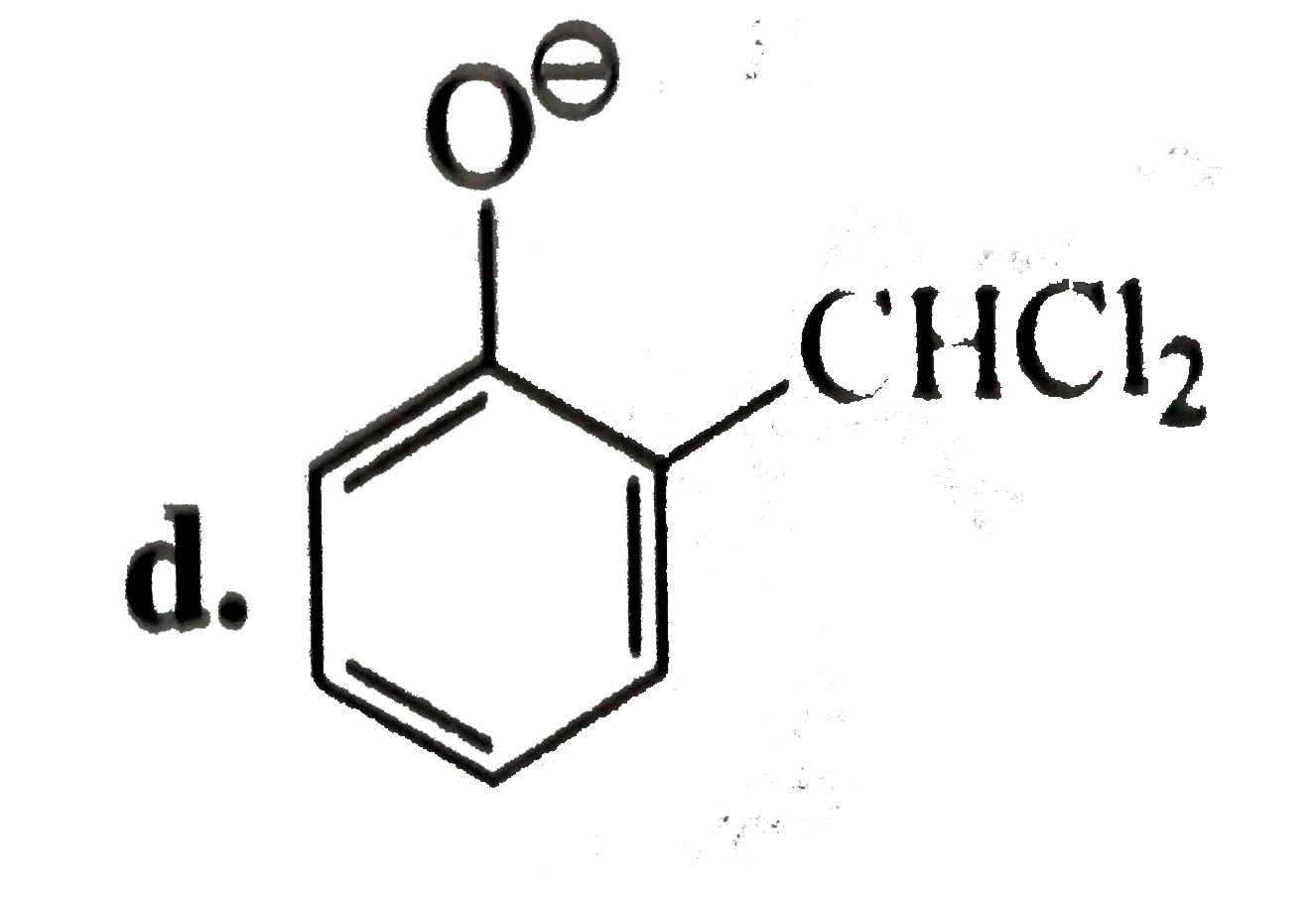Phenol reacts with CHCI3 and NaOH (at 340K) to give .
o-chlorophenol
salicyladehyde
benzaldehyde
chlorobenzene
The correct Answer is:B
To solve the problem of the reaction between phenol and chloroform in the presence of sodium hydroxide at 340 K, we can follow these steps:
1. Identify the Reactants:
- The reactants in this reaction are phenol (C6H5OH) and chloroform (CHCl3). Sodium hydroxide (NaOH) acts as a base in this reaction.
2. Understand the Reaction Type:
- This reaction is known as the Reimer-Tiemann reaction. It involves the ortho-formylation of phenols using chloroform and a strong base.
3. Write the Reaction Equation:
- The reaction can be represented as follows:
C6H5OH+CHCl3+NaOH→C6H4(OH)(CHO)+3NaCl+2H2O
- Here, C6H4(OH)(CHO) represents salicylaldehyde (ortho-hydroxybenzaldehyde).
4. Product Formation:
- The main product formed from this reaction is salicylaldehyde (C6H4(OH)(CHO)). This compound has both a hydroxyl group (–OH) and an aldehyde group (–CHO) attached to the aromatic ring.
5. By-products:
- The by-products of this reaction include sodium chloride (NaCl) and water (H2O).
6. Final Answer:
- Therefore, the final product of the reaction between phenol and chloroform in the presence of sodium hydroxide at 340 K is salicylaldehyde.
Summary of the Reaction:
- Reactants: Phenol (C6H5OH), Chloroform (CHCl3), Sodium Hydroxide (NaOH)
- Product: Salicylaldehyde (C6H4(OH)(CHO))
- By-products: Sodium Chloride (NaCl), Water (H2O)
- The reactants in this reaction are phenol (C6H5OH) and chloroform (CHCl3). Sodium hydroxide (NaOH) acts as a base in this reaction.
- This reaction is known as the Reimer-Tiemann reaction. It involves the ortho-formylation of phenols using chloroform and a strong base.
- The reaction can be represented as follows:
C6H5OH+CHCl3+NaOH→C6H4(OH)(CHO)+3NaCl+2H2O
- Here, C6H4(OH)(CHO) represents salicylaldehyde (ortho-hydroxybenzaldehyde).
- The main product formed from this reaction is salicylaldehyde (C6H4(OH)(CHO)). This compound has both a hydroxyl group (–OH) and an aldehyde group (–CHO) attached to the aromatic ring.
- The by-products of this reaction include sodium chloride (NaCl) and water (H2O).
- Therefore, the final product of the reaction between phenol and chloroform in the presence of sodium hydroxide at 340 K is salicylaldehyde.
- Reactants: Phenol (C6H5OH), Chloroform (CHCl3), Sodium Hydroxide (NaOH)
- Product: Salicylaldehyde (C6H4(OH)(CHO))
- By-products: Sodium Chloride (NaCl), Water (H2O)
Topper's Solved these Questions
- BOOK - A2ZCHAPTER - ORGANIC COMPOUNDS CONTAINING HALOGENSEXERCISE - AIIMS Questions25videos
ORGANIC COMPOUNDS CONTAINING HALOGENS
- BOOK - A2ZCHAPTER - ORGANIC COMPOUNDS CONTAINING HALOGENSEXERCISE - Assertion-Reasoning Questions9videos
ORGANIC COMPOUNDS CONTAINING HALOGENS
- BOOK - A2ZCHAPTER - ORGANIC COMPOUNDS CONTAINING HALOGENSEXERCISE - Section B - Assertion Reasoning16videos
ORGANIC COMPOUNDS CONTAINING HALOGENS
- BOOK - A2ZCHAPTER - MOCK TESTEXERCISE - Mock Test 245videos
MOCK TEST
- BOOK - A2ZCHAPTER - ORGANIC COMPOUNDS CONTAINING NITROGENEXERCISE - Section D - Chapter End Test30videos
ORGANIC COMPOUNDS CONTAINING NITROGEN
Similar Questions
Phenol is heated with chloroform and NaOH at 340 K. what is the main product formed? Also give the name of the rection involved.
View Solution(A) Reimer-Tiemann reaction of phenol with CCl4 in NaOH at 340K gives salicylic acid as the major product.
(R ) The reaction occurs through intermediate formation of dichlorocarbene.View Solution
Knowledge Check
- Question 1 - Select One
Phenol reacts with NH3 to give
AbenzamideBbenzoic acidCanilineDNone of the above - Question 2 - Select One
Phenol on reaction with CHCl3 and NaOH give salicylaldehyde. Intermediate of this reaction is
AcarbocationBcarbanionCradicalDcarbene - Question 3 - Select One or More
When phenol is reactes with CHCI3 and NaOH followed by acidification, salicyladehyde is obtained. Which of the following species are involed in the above-mentioned reaction as intermediates ?
A B
B C
C D
D
Assertion: Phenol reacts with CH3l in presence of NaOH to form methoxybenzene.
Reason: Phenoxide is better nucleophile than phenol.View SolutionIn the reaction of phenol with CHCl3 and aqueous NaOH at 70∘C (343K), the electrophile attacking the ring is :
View SolutionPhenol reacts with Br2 in H2O to give
View SolutionAn organic compound (A) on reduction gives a compound (B) which on reaction with CHCI3 and NaOH form (C). The compound (C) on catalytic reduction gives N-methylaniline. The compound (A) is:
View SolutionPhenol react with PCl5 to give mainly
View Solution

